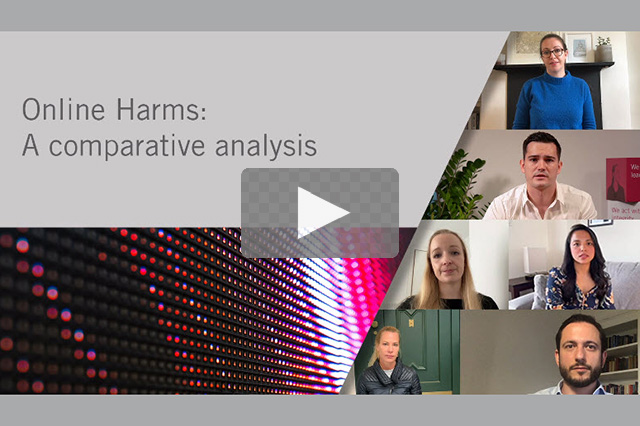The global perspective
Online platforms are under scrutiny like never before, with a wave of regulation sweeping the digital economy and ever more regulators seeking to intervene.
A consensus has emerged between governments, societies and many of the major platforms that more needs to be done to combat online harms. Many governments across the globe are looking to replace the current patchwork of discrete laws and voluntary initiatives with more holistic regulation. The challenge for regulators is to perform a regulatory balancing act: protecting against harm while upholding fundamental human rights. This challenge was highlighted by recent events in the US where, in the absence of regulation, tech companies have been left to determine where to draw the line between potential harm to their users and freedom of speech.
Allens contributed to the Linklaters publication Online Harms: A comparative analysis, which looks at eight key jurisdictions in this new frontier: analysing the current position in Australia, France, Germany, Singapore and the United States, as well as bold proposals put forward by the EU, Ireland and the United Kingdom. While there is no consensus across these jurisdictions, there are some common themes.
We navigate the complex landscape and analyse, compare and contrast these regimes with both a thematic and a country-by-country review.
Australia in the spotlight
Online harms are regulated by three laws in Australia: the Broadcasting Services Act 1992, the Criminal Code Act 1995 and the Enhancing Online Safety Act 2015. Together, these laws provide a framework that allows the eSafety Commissioner to enforce this emerging area of concern.
Our contribution to the Linklaters report covers the below topics:
- What framework is in place to regulate online harms?
- Who is in scope?
- What do you have to do to comply?
- What types of harm are regulated?
- Does the regime cover private communications?
- Who is the regulator and how do they enforce the regime?
- Looking ahead
A global snapshot
Key global insights
- There is a broad, and growing, range of intermediaries in scope for regulation
- While specifics vary by region, there is some consensus on the types of harm that users need to be protected from
- Certain regimes focus on specific content and others on systems and processes
- What compliance involves: a global analysis
- Consequences of non-compliance are diverse and far-reaching
- Looking ahead: trends and new regulations in the pipeline





